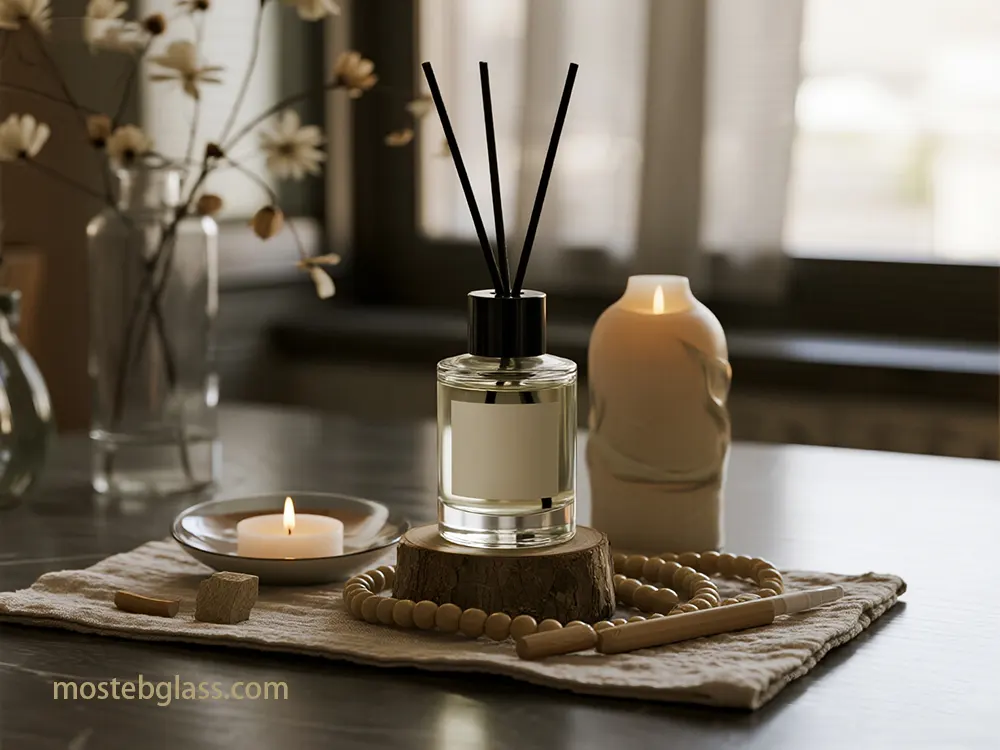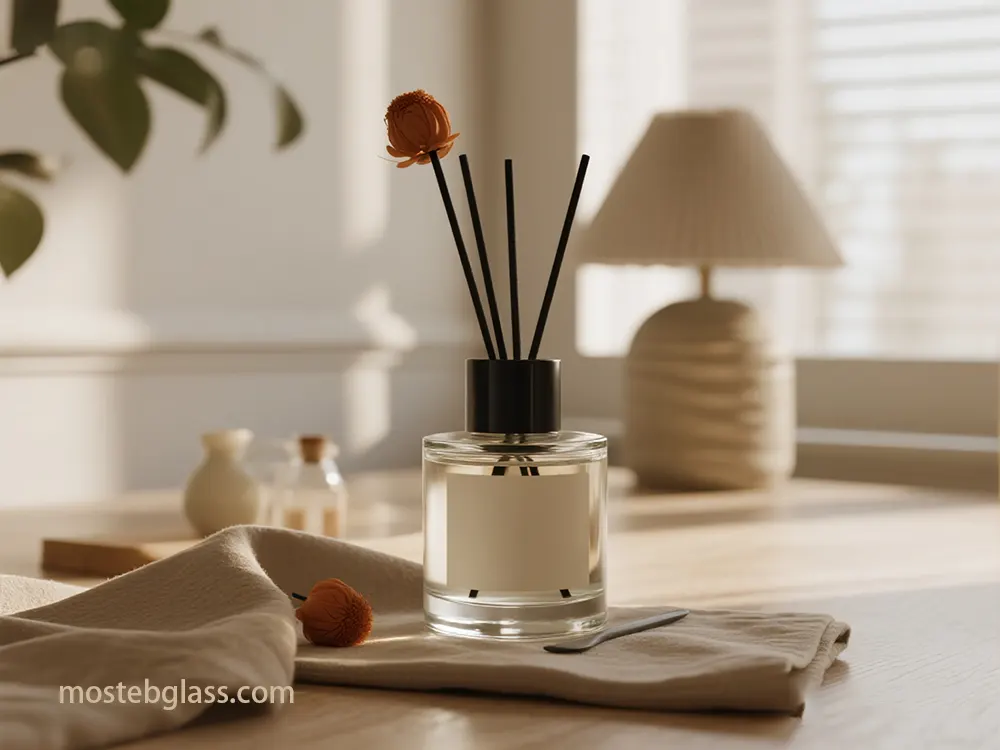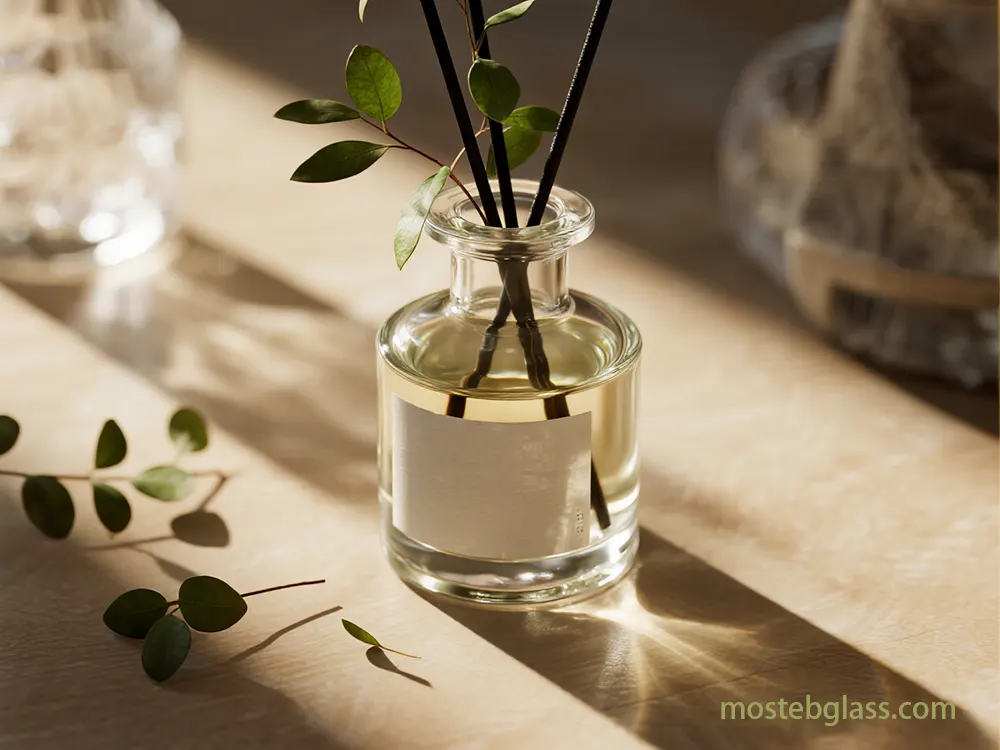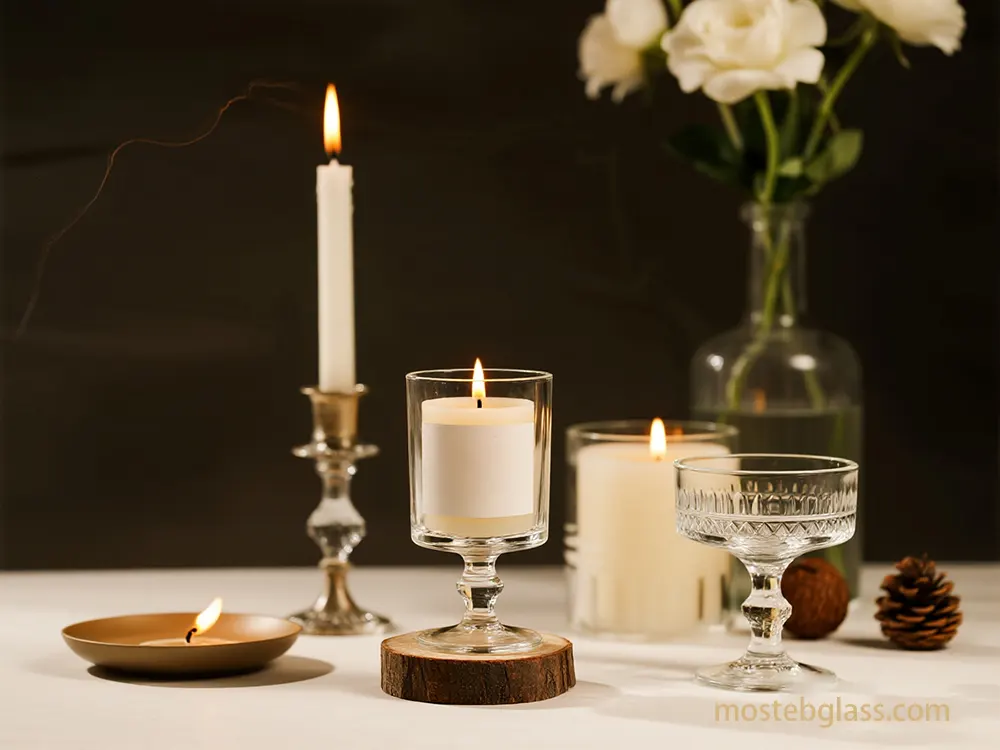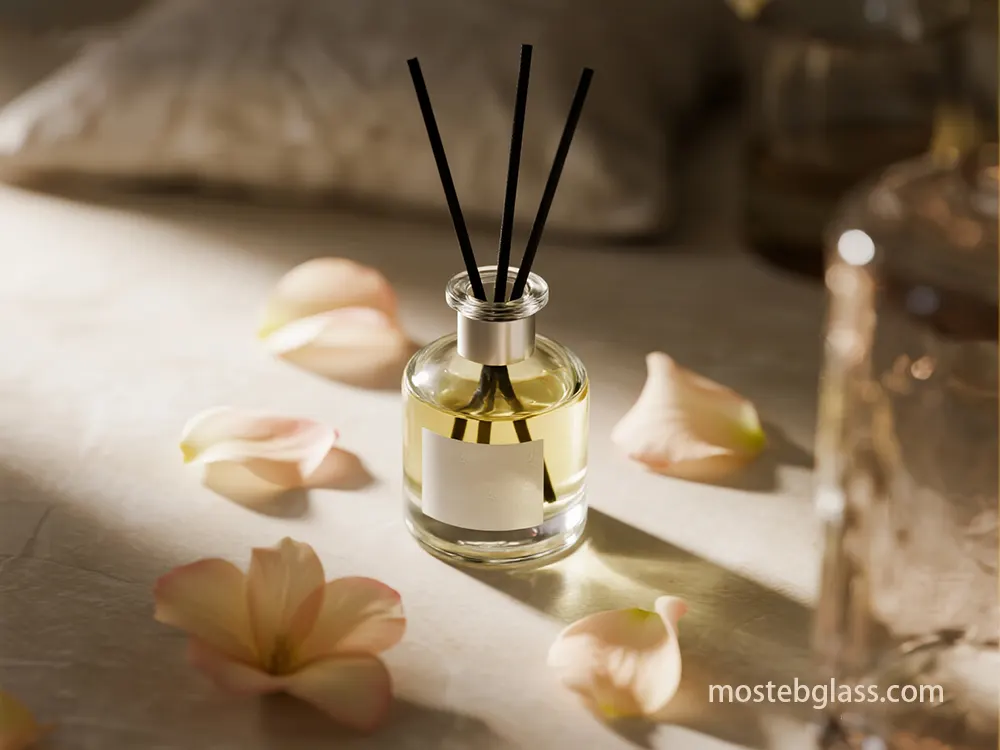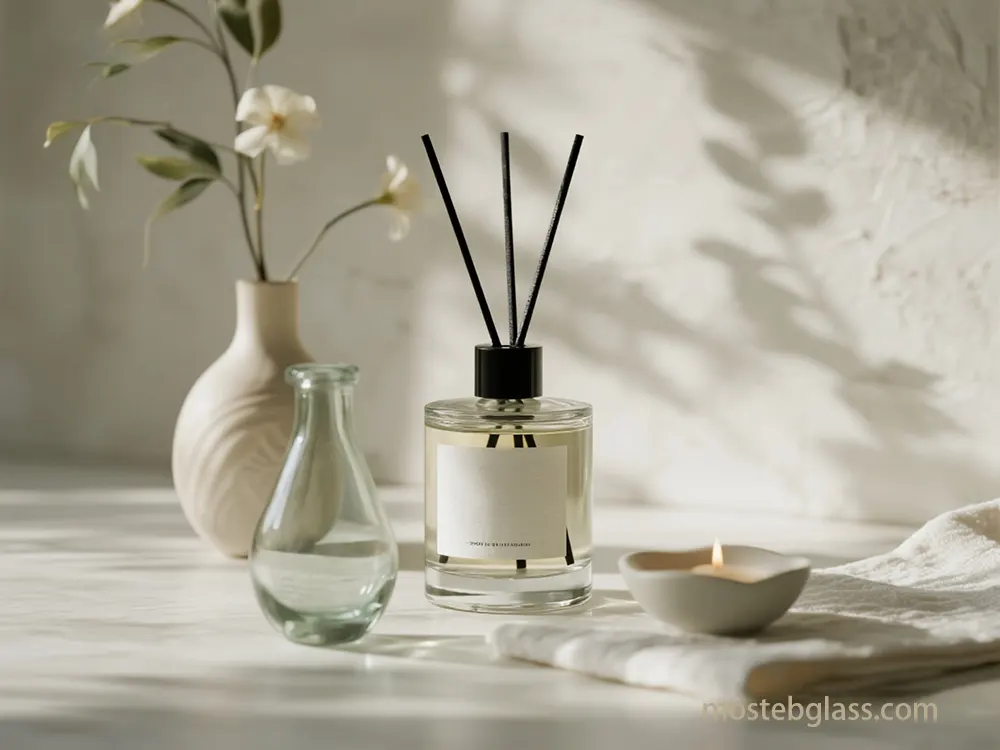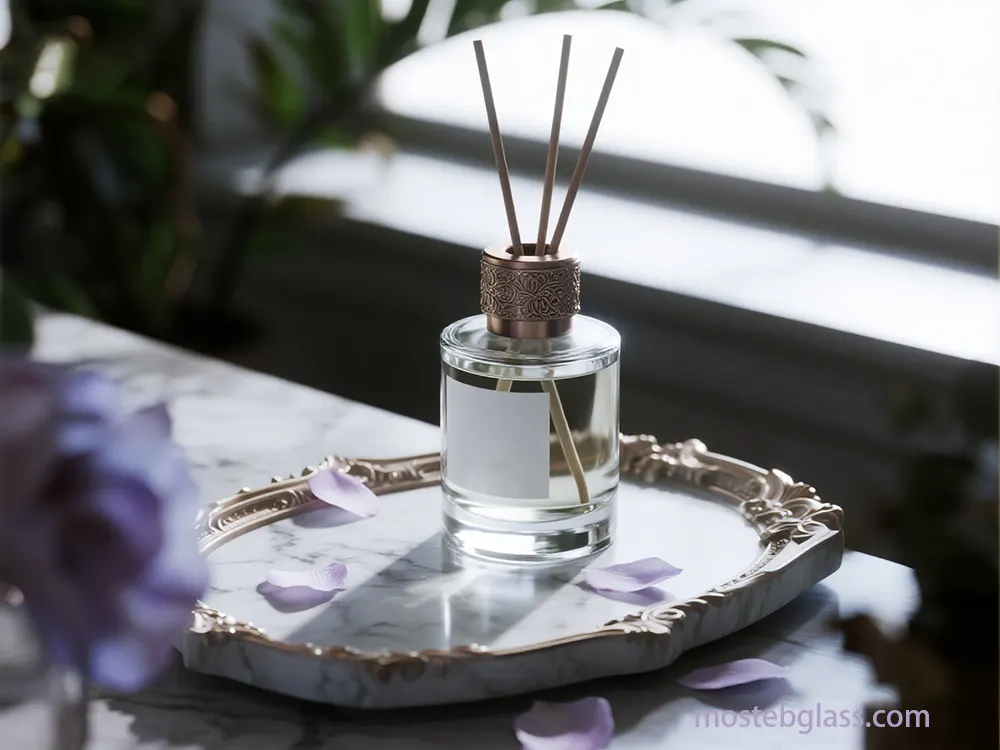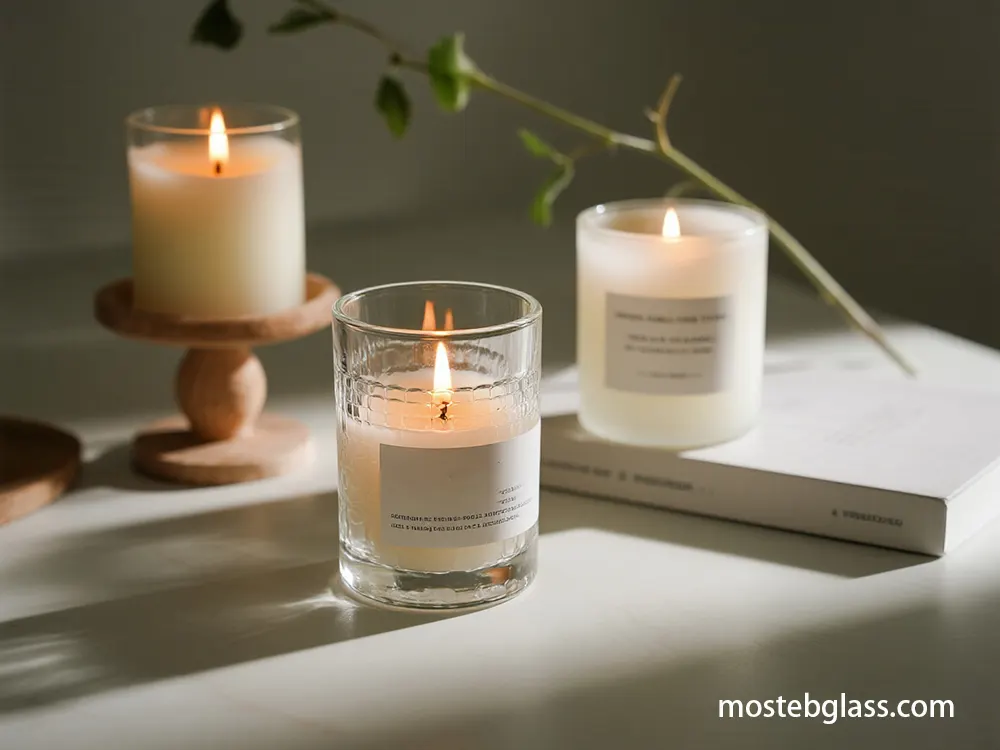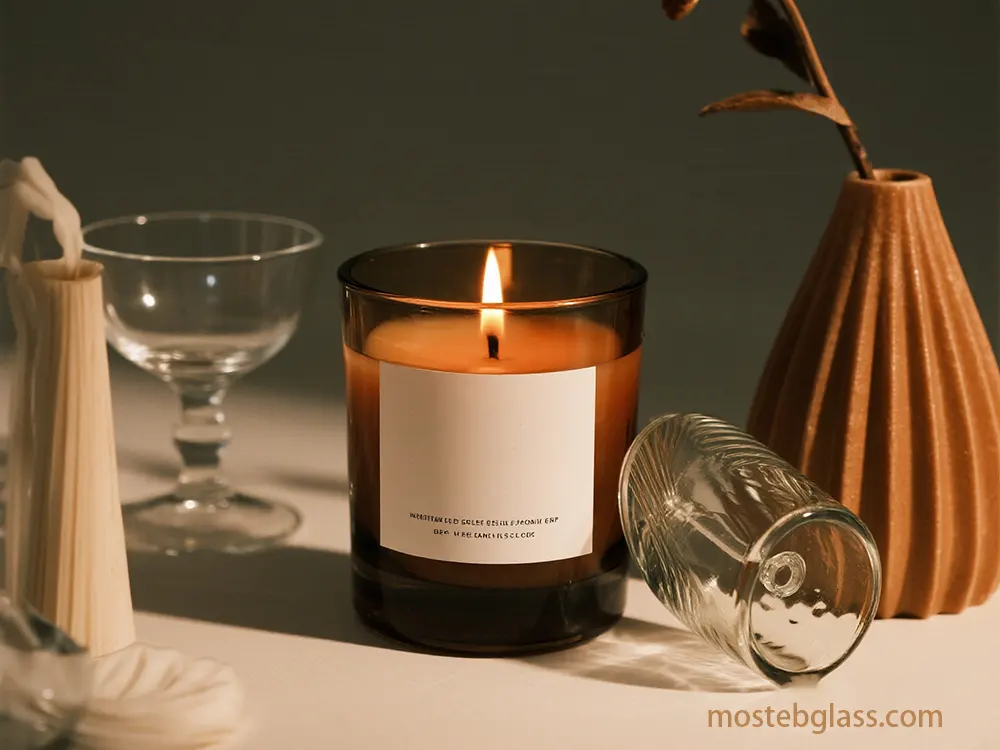Post-Consumer Recycled (PCR) Content:
PCR glass, reclaimed and endlessly reused, significantly conserves raw materials and reduces energy consumption (e.g., 2.5% energy reduction per 10% cullet increase).Growing regulatory pushes, like U.S. state mandates for PCR content in plastics, highlight its importance.While PCR can affect aesthetics, manufacturing advancements improve consistency.PCR supports a circular economy, reducing virgin material reliance and carbon emission.
Reusability and Refillability:
Consumer preference for sustainable packaging is strong, with 78% of U.S. shoppers prioritizing sustainable lifestyles and 79% likely to buy refillable products.Barriers include perceived inconvenience (37%), cleaning effort (42%), and lack of storage (47%).Despite this, successful models like Loop and specialized refill systems (ReCandle Co., Wyxcraft, Arbor Made) demonstrate viability.
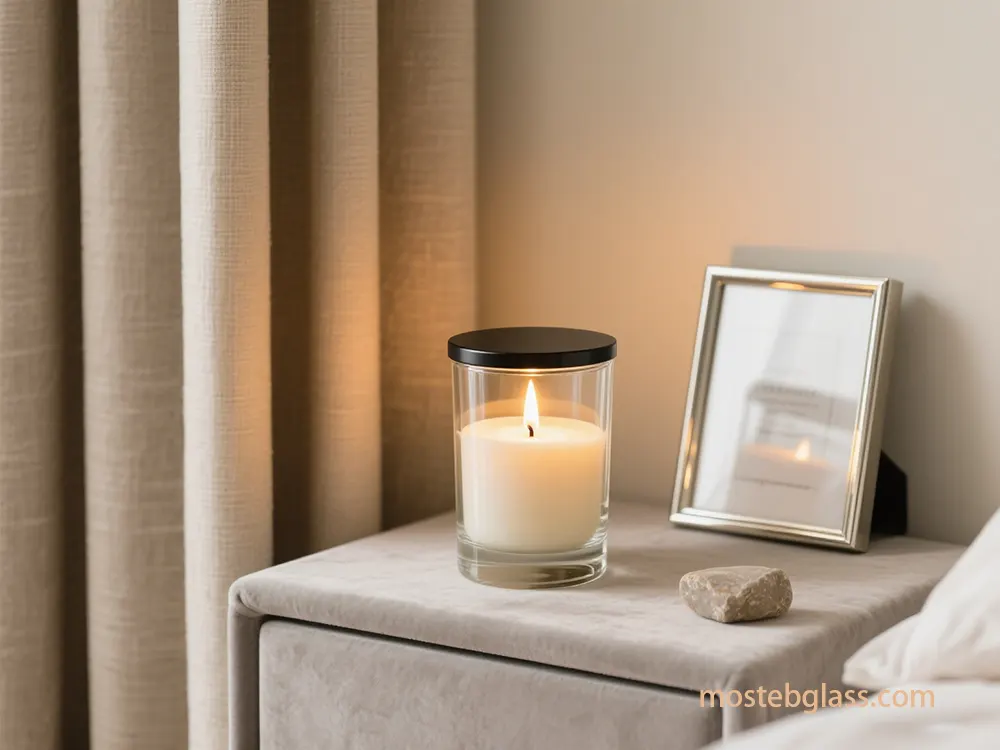
Carbon Footprint Reduction:
Minimizing carbon footprint requires assessing the jar’s entire life cycle, from raw material to end-of-life. Life Cycle Assessment (LCA) systematically evaluates environmental impacts (carbon, water, energy, waste) to identify “hotspots” for improvement. LCA methodology is standardized by ISO 14040/14044.
- End-of-Life Options: Jars should support robust end-of-life scenarios: high recyclability, industrial, or home compostability. Glass is endlessly recyclable. Bioplastics have nuanced pathways: industrial composting (55°C-70°C) is efficient, while home composting is slower and less effective.Certifications like ASTM D6400 and EN 13432 ensure industrial biodegradation within 12 weeks.However, compostable bioplastics in landfills can generate methane and interfere with traditional plastic recycling.
- 1.2. Preferred Materials Mosteb’s preferred materials balance environmental performance and functional integrity:
- Recycled Glass: Perceived as safe and premium, recycled glass reduces waste, is reusable, heat-resistant, and aesthetically versatile.Premium options are often BPA/lead-free and corrosion-resistant.
- Innovative Bioplastics: Promising alternatives for specific design or weight needs.
High-Temperature Cellulose-Based Bioplastics:
Researchers developed wood pulp-derived bioplastics with over 740°C heat resistance and low density.
- Biome Bioplastics’ BiomeHT Range: Offers high-temperature resistant, biodegradable, and compostable bioplastics (e.g., BiomeHT90, BiomeHTX) suitable for injection molding and certified for industrial composting. Spirulina-Based Bioplastics:
- University of Washington developed bioplastics from blue-green cyanobacteria that degrade like banana peels and are fire-resistant. PaperFoam®:
- Made from natural paper, potato starch, and organic binder; 100% compostable and recyclable, ideal for candle refills. PHA (Polyhydroxyalkanoate):
A naturally produced biopolymer, forming the basis for home compostable bioplastics when combined with other materials. - Polycarbonate: Durable, safe, and heat-resistant (over 130°C), it doesn’t shatter like glass.Companies like Intecplast offer polycarbonate jars (ReVel) as a glass alternative.
- 1.3. Essential Design and Functional Requirements Design and functional aspects are critical for safety, performance, and brand appeal:
- Heat Resistance and Safety Standards: Jars must withstand high burning temperatures without cracking.
- ASTM Standards (U.S.): Key standards include ASTM F2058 (labeling), ASTM F2179 (glass heat strength, requiring scratch/temper tests, thermal shock, and manufacturer documentation), and ASTM F2417 (fire safety, including flame height and container integrity).
EN Standards (EU):
Regulated by GPSD, EN 15493 covers fire safety (flame height, no secondary ignition/flaring, container integrity, 10° slope stability).EN 15426 addresses sooting (less than 1.0% soot).EN 15494 specifies safety labeling.
- Thermal Shock Testing: Assesses material’s resistance to sudden temperature changes (ASTM C149, ISO 7459:2004).
- Wick Requirements: EU bans lead wicks; NCA recommends lead-free.
- Lid Compatibility: Jars must work with sustainable lid materials (metal, wood, cork) to maintain integrity.
- Branding Capabilities: Design should allow effective branding via printing, labeling, or unique molds. The industry favors clean, minimalist aesthetics.
- Functional Reusability: Design should encourage repurposing empty jars (storage, plant pots) beyond just refilling, aligning with consumer trends.
- 2. Strategic Sourcing Parameters Strategic sourcing requires understanding primary geographic regions and estimated production volumes for targeted supplier identification.
- 2.1. Primary Geographic Regions for Supplier Search Region selection balances sustainability with logistics and market dynamics:
- North America: Significant glass manufacturing presence, with organizations like GMIC promoting sustainable practices. CPSC collaborates with ASTM on safety standards.Viable for domestic markets, reducing transport emissions. Leaders in glass recycling like Strategic Materials, Inc. (SMI) operate facilities across the region.Alfred University’s Center for Glass Innovation (CGI) researches recycling.
Europe:
Highly developed glass industry with strong sustainability focus. European Commission promotes energy efficiency, waste management, and recycling.EU glass manufacturing emissions are regulated by IED.Glass Alliance Europe advocates for the industry.The flat glass sector aims for carbon neutrality by 2050, having reduced CO2 emissions by 43% since 1990.Regulations like ESPR, EU ETS, and REACH drive sustainable practice.MAGNA Glaskeramik GmbH produces glass-ceramic from 100% recycled bottles.
Global Considerations:
Diversification and competitive pricing are benefits, but must be balanced against increased transportation emissions and complex sustainability verification across diverse regulatory environments. Emerging markets may offer lower costs but require rigorous due diligence on environmental and labor practices.
- 2.2. Estimated Production Volumes or Order Quantities Understanding Minimum Order Quantities (MOQs) is crucial for cost, lead time, and inventory.
- MOQ Definition and Impact: MOQs are the lowest units a supplier produces, ensuring efficiency and covering fixed costs. High MOQs can hinder small businesses.
- Typical MOQ Ranges for Candle Jars: Ready stock glass jars: 3,000-5,000 pieces.
Custom glass jars:
20,000-50,000 pieces.
- Custom eco-friendly packaging boxes: 50-100 pieces.
- Broader cosmetic packaging:5,000-20,000 units.
- Supplier Flexibility and Negotiation: Some suppliers (Shenzhen I Green, EcoPackables, LX Packaging) offer low or zero MOQs for eco-friendly packaging.Strategies for lower MOQs include using stock packaging, mixed batches, long-term partnerships, and simplifying customization.
- Pricing Implications: Lower MOQs may result in higher unit costs, as MOQs help suppliers maintain cash flow and optimize production.
- Impact on Supply Chain Resilience: Effective MOQ management and resilient, eco-friendly materials fortify supply chain resilience.
- 3. Identified Sustainable Candle Jar Suppliers Mosteb’s supplier identification focuses on alignment with sustainability criteria, material capabilities, operational scale, and geographic presence.
- 3.1. Certification and Testing Bodies Mosteb should prioritize suppliers with relevant certifications and willingness for third-party testing.
- Certification Bodies: SCS Global Services:
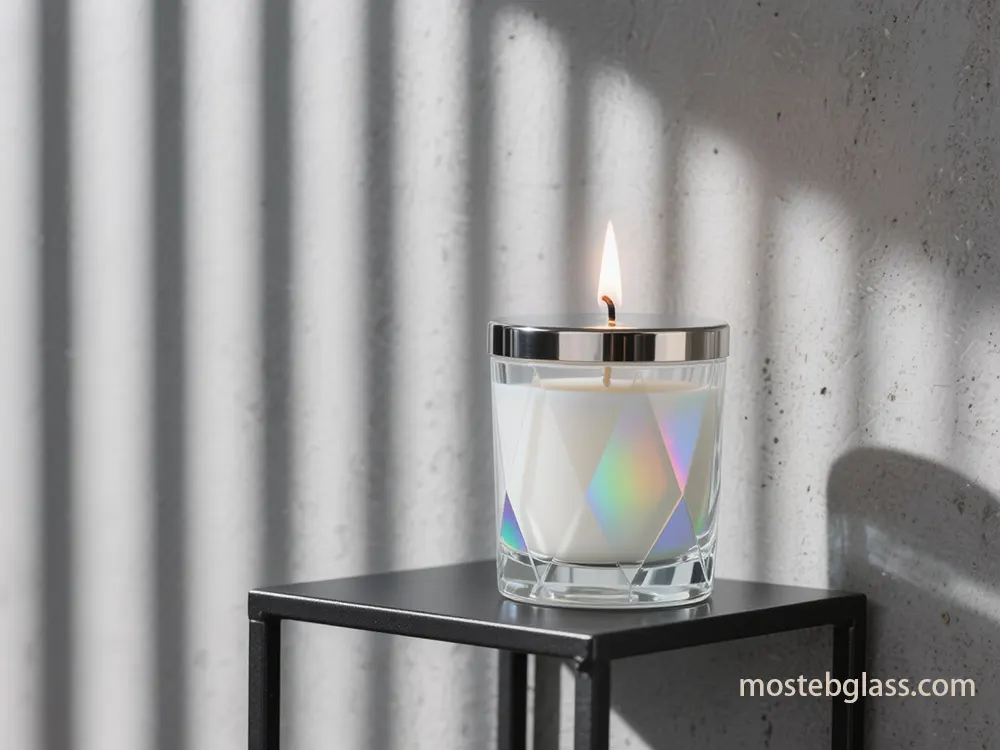
Third-celebration certification for environmental, sustainability, and quality claims, which includes recycled content material and plant-based products.
Cradle to Cradle Certified:
Global preferred for secure, circular, responsibly made merchandise throughout five classes.
Biodegradable Products Institute (BPI):
Certifies merchandise assembly ASTM D6400 and D6868 for compostable plastics.
- SCS Global Services: רישום שלישי עבור טענות סביבתיות, קיימות ואיכות, שכולל חומרים ממוחזרים ומוצרים ביולוגיים.
- Cradle to Cradle Certified: בחירה גלובלית לטובת סחורה בטוחה, מעגלית ומופקת באופן אחראי בחמישה קטגוריות.
- Biodegradable Products Institute (BPI): רישום עבור הרכבת סחורה לפי ASTM D6400 ו-D6868 לפלסטיקים דווקאיים.
מעבדות בדיקה:
- Intertek, QIMA, DEKRA, TUV Rheinland, GS Laboratories: ניתן לספק בדיקות מקיפות של נרות (בטיחות מדורה, עשן, ביצועי כיתוך, יציבות מבנית, תוויות). DEKRA מוסמך על פי DIN EN ISO/IEC 17025.
רשימה זו מציעה נקודת יציאה ל-Mosteb לאינטראקציה עם מספקי יכולת, כולל חשיבה לחומרים ברי קיימא ומיומנויות פעולה.
4. סטרטגיית בחירת מספקים
גישה מוסדרת היא חשובה ל-Mosteb כדי להעריך ולבחור מספקי כוסות נרות ברי קיימא מתאימים, כולל בדיקות, KPIs וציוד אנליטי.
4.1. שיטת הערכה מסודרת
תהליך ההערכה צריך להיות מרובע רב-שכבתי:
סינון ראשוני והכשרה:
- טענות קיימות: בקשת תיעוד לנוכחות חומרים מתכלתים (PCR), ורישיונות (SCS Global Services, Cradle to Cradle, BPI).
- תאמת חומרים: ודא יכולת לחומרים המועדפים (זכוכית ממוחזרת, ביו-פלסטיקים בעלי טמפרטורת גבול גבוהה).
- יכולת ייצור/MOQ: הערכת התאמה למלאי הנראים של Mosteb.
- נוכחות גאוגרפית: סדר עדיפויות צפון אמריקה ואירופה כדי להפחית פליטות, כולל אפשרויות עולמיות לצרכים מיוחדים.
בדיקה דייקנית וחקירה:
- ניהול סביבתי: בדיקת EMS (למשל, ISO 14001), שימוש באנרגיה/מים, פסולת, פליטות, ניהול כימיקלים.
- עבודה אתית: הערכת תנאי עבודה, שכר וחוסר יצירת עבודה ילדים/כפוי (למשל, SA8000) [לא רלוונטי].
- שקיפות שרשרת האספקה: ודא ערכת חומרים ונוכחות PCR. חקור בלוקצ'יין לאחר יכולת עקיפות [לא רלוונטי].
- בטיחות המוצר/התאמה: ודא התאמה לASTM (F2179, F2417), EN (15493, 15426, 15494), וחוקי כימיקלים (REACH, RoHS).
- בדיקה במקום: ניהול בדיקות כדי לאמת מידע ולהעריך מחויבות [לא רלוונטי].
הכנסת הערכת מחזור חיים (LCA):
- LCA להשוואת חומרים: שתמש את LCA כדי להשוות ביצועים סביבתיים של עיצובים, חומרים ומערכות (למשל, חד-פעמיים נגד מתמלאים). הוא העריך השפעות מחומר גלם ועד הפסולת.
- LCA Software: השתמש בכלים כמו SimaPro, GaBi, PIQET, EcoImpact-COMPASS, Sphera’s LCA for Packaging, או Anthesis Group’s PortfolioPro. כלים פשוטים (KIDV, Botta) להשוואות ראשוניות.
- Data Requirements: מספרי צרכים חיוניים חייבים לספק מידע על חומרים לא מטוגנים, אנרגיה, פליטות, פסולת ותחבורה עבור LCA נכון.
- ISO Compliance: בצע LCA מתאים ל-ISO 14044 עבור בדיקות חזקות.
4.2. נקודות מדידה מרכזיות לבחירת מספרי
נקודות המדידה צריכות להיות מדידות ולהיות מחוברות לקיימות וביצועים פועלים:
- Environmental Performance:
- אחוז תוכן מתוקן (למשל, יעד 50%+ PCR).
- טביעת רגל פחמנית מתאימה ליחידה (מ-LCA).
- יעילות אנרגיה/מים (kWh/יחידה, ליטר/יחידה) [לא רלוונטי].
- ריכוז פסולת [לא רלוונטי].
- הסמכות (Cradle to Cradle, SCS Global Services, BPI).
- Operational and Quality:
- עמידות בחום/ציוד לפי ASTM F2179, EN 15493, עבר בדיקת פתע תרמי.
- בקרת איכות (נזיקים, יציבות).
- זמני הגעה ומשלוח בזמן.
- Cost-Effectiveness (עלות יחידה, MOQ, חיסכון לטווח ארוך).
- Social and Ethical:
- ציוד עבודה מחויב (נבדק) [לא רלוונטי].
- ציוד שקיפות (תיעוד שרשרת האספקה, עקיפות) [לא רלוונטי].
- Innovation and Future-Readiness:
- השקעה ב-R&D בחומרים ברי קיימא/מחזק.
- יכולת התאמה לדרישות משתנות.
4.3. פתרונות פרואקטיביים וצרכים מתחזיתיים
- Supplier Development: הפעלת יישומים עבור מספרים מבטיחים כדי לשפר פעולות קיימות (למשל, אופטימיזציה של חשמל, ניהול פסולת) [לא רלוונטי].
- שותפויות לטווח ארוך: טיפוח קשרים למחיר גבוה יותר, ניידות MOQ וחידוש משותף.
- קנייה מגוונת: צמצום סיכונים על ידי הפרדת מספרים במסלולי אזורים וחומרים.
- קידום כלכלת מעגלית: חקור שימושים חוזרים, שיתוף פעולה מקומי למיחזור, או מימון למיחזור מתקדם עבור מסלולי הפסולת של Mosteb.
- חינוך צרכים: הכשרת צרכים על ייעודיות והפרשה נכונה דרך תוויות ברורות (EN 15494) והוראות כדי לעלות את ההשתתפות ולפתור בלבול.
- ניטור דיגיטלי: הנחתת עקיפות דיגיטלית למלאי וראיית ספק מסופח. הגדרת KPIs לביצוע מתמשך של ספקים יציבות (נוכחות מתכולה ממוחזרת, אנרגיה/יחידה, פחות פסולת) [לא רלוונטי].
סכמה חזקה זו מאפשרת ל-Mosteb לבחור בשותפים שמחייבים דרישות קשות של יציבות סביבתית ואיכות גבוהה, תוך תרומה לשרשרת מסחר חסונה ואחראית.

5.זירות עתידיות וחידושים באריזות יציבות
המציאות של אריזות יציבות היא דינמית. Mosteb חייב להישאר מעודכן בזירות לתכנון אסטרטגי ארוך טווח ויתרון תחרותי.
5.1. חומרים עולים
חומרים חדשים מציעים יציבות וביצועים משופרים:
- ביו-פלסטיקים מתקדמים:
- ביו-פלסטיקים מבוססי סלילוס: מחקר מראה על ביו-פלסטיקים מעץ עם עמידות בטמפרטורות מעל 740°C ודחיסות נמוכה, ואלו יכולים לשנות את הקונספט של כדי נרות.
- ביו-פלסטיקים מבוססי ספירלינה: אוניברסיטת וושינגטון פיתחה ביו-פלסטיקים מצמחי מים עם יכולת פרקולציה כמו כרית תפוח והם עמידים באש.
- Heat Resistance and Safety Standards: ביו-פלסטיקים דיפרדבלים לקומפוסט ביתי, ברור שנוצרו על ידי מיקרואורגניזמים, מציעים גיוון לפתרונות מותאמים אישית.
- קומפוזיטים ביו-בסיסיים: טיפוח חומרים כמו חיפושייה, עץ, קרן וחזזית בתוך קומפוזיטים מציעים תקווה לבידוד תרמי משופר, ומתאימים לכדי נרות.
- אריזות מבוססות על מיליום: (מדובר בהשערה) מבנים של פטריות צומחים לאריזות מגן. יכולת ההפרקולציה שלהם והצורות הקנבליות המתאימות יכולות להיות מועמדות עתידיות לאריזות חיצוניות או רכיבים מבניים, במיוחד עבור מערכות מתארקים.
- אריזות מבוססות על מלח: (מדובר בהשערה) מחקר בחומרים מבוססי מלח ממוסחר יכול לספק פתרונות ללא פסולת לחלקים מסוימים, אך עמידות בחום היא אתגר עבור כדים.
5.2. תהליכי ייצור מתקדמים
חידושים הופכים חומרים יציבים לאפשריים ויעילים יותר:
- ראייה ורובוטיקה בסידור: משפרת יעילות ומפחיתה זיהום בסידור זכוכית וקרמיקה ממוחזרת, מגדילה את איכות ה-PCR cullet.
- המחזרה הכימית לזכוכית: נחקרת לפרק זכוכית למרכיבים גזוזים לשימוש מחדש מסוים.
- קריסטליזציה על ידי גירוש דופן: מאפשרת קריסטליזציה מהירה ביותר של זכוכית, חוסכת אנרגיה וזמן בייצור זכוכית-קרמית.
- הנחה גרגירים מוגדרת (SPD): iro3d SPD מייצרת חלקים של זכוכית-קרמית מגרגירי זכוכית ממוחזרים, מאפשרת עיצוב מותאם אישית.
- מערכות סגורות: פיתוח שיבה מתמדת של פסולת קרמית וזכוכית חזרה לייצור, מקטינה את הפסולת וממקסמת שימוש בעזרה.
5.3.
הבנת הדינמיקות המשתנות של השוק והאפשרויות של הלקוח היא מפתח:
- דרישה גדלה: דרישה ברורה וגדלה למוצרים ברי קיימא, הנתקעת דרך עידוד הצרכן והנחיות.78% מבעלי הבית האמריקאיים מקדישים עדיפות לחיים ברי קיימא.
- המעבר למשתמשים חוזרים/ממוחזרים: הממשלה הבריטית העבירה את תשומת הלב שלה מפלסטיקים דיאגרמיים/קומפוסטבילים למשתמשים חוזרים/ממוחזרים עקב בעיות בתשתית. הצרכנים לעתים קרובות מבינים נכון את ההרכבה הכימית של פלסטיקים.
- תמריצים לאריזות משתמשות חוזרות: נקודות לויטליות וחיסכון בערך מאלצות לאימוץ. הילוכה יכולה להיות זולה יותר.
- מהפכה דיגיטלית: המעקב הדיגיטלי באריזות מסדר את המלאי ומשפר את העמידות של השרשרת.
- קנייה מקומית: חומרים מבוססי חיידקים מציעים אפשרויות קנייה מקומית, מפחיתים את הפליטות במשלוח.
- מדיניות והגבלות: תקנות האיחוד האירופי לאריזות ופסולת אריזות (PPWR) מדגישות אריזות ברי קיימא, עם פלסטיקים מבוססי חיידקים חשובים לחלום של כלכלה מעגלית. הערכה חובה של LCA בקנייה תפחית CO2. ארצות הברית חסרה תקנים פדרליים לפלסטיקים מבוססי חיידקים, מובילה לאי מידע על תוויות.
5.4. אסטרטגיות פעילות ל-Mosteb
כדי לנצל את המגמות הללו, Mosteb צריך לקחת בחשבון:
- שיתופי R&D: שותף עם אוניברסיטאות (למשל, אוניברסיטת אלפרד) ויזמים כדי לחקור חומרים ואסטרטגיות ברי קיימא חדשים.
- תוכניות הילוכה חזקות: הרחבת מבנים נגישים להילוכה, ספקת ערכות DIY או שירותים בחנות.
- תקשורת שקופה: להסביר ברור את המאפיינים הברי קיימא (נוכחות PCR, חוזרות, סוף חיים) כדי לבנות אמון ולהתגונן מבלי להכפיש ירוק.
- קידום שינויי מדיניות: להשתתף עם איגודי תעשייה (GMIC, Glass Alliance Europe) ואנשי קידום ערים עבור דרישות ברורות ותשתית מתקדמת.
- תשתית מחזרת מתקדמת: לחקור שיתופי פעולה עם מרכזים המשתמשים במחזור גבוה יותר של מחזור זכוכית וקרמיקה לגישה מעגלית.
על ידי קידום פעיל עם הפיתוחים הללו, Mosteb יכול לעמוד בדרישות המשתנות ולהקים עצמו כחלוץ בייצור נרות ברי קיימא.




